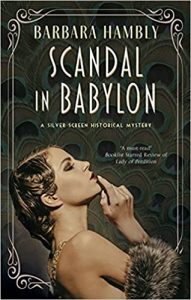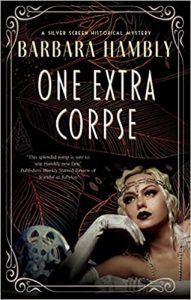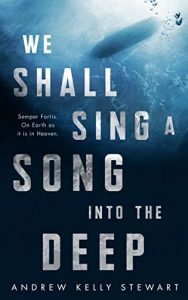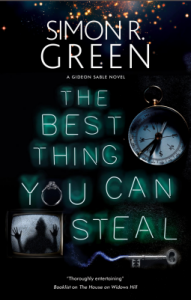 Saving Susy Sweetchild (Silver Screen Historical Mystery #3) by Barbara Hambly
Saving Susy Sweetchild (Silver Screen Historical Mystery #3) by Barbara Hambly Format: eARC
Source: supplied by publisher via NetGalley
Formats available: hardcover, ebook
Genres: historical fiction, historical mystery, mystery
Series: Silver Screen Historical Mystery #3
Pages: 293
Published by Severn House on September 3, 2024
Purchasing Info: Author's Website, Publisher's Website, Amazon, Barnes & Noble, Kobo, Bookshop.org, Better World Books
Goodreads
Welcome to Hollywood of the 1920 a world filled with glamour, fake names . . . and the occasional felony!
July, 1924. After nine months of living in Hollywood and working as a companion to her beautiful silent-movie star sister-in-law, young British widow Emma Blackstone is settling into her new doctoring film scenarios whenever the regular scenarist is overwhelmed with work, which seems to be most of the time.
Shoots for the Western movie Our Tiny Miracle are in full swing, with little seven-year-old Susy Sweetchild playing the lead and acting most professionally. Maybe too professionally, Emma thinks, shocked to the core when the child star is nearly killed in a stunt scene and her mother - former screen siren Selina Sutton - seems only to care that Susy gets the job done.
But Emma's concerns only worsen when news reaches her that Susy and her mother have been kidnapped. The ransom note says to keep the cops out of it, so it's up to Emma and Kitty to find them before the unthinkable happens and Emma is forced to rewrite Our Tiny Miracle with a far more tragic ending . . .
New York Times bestselling author Barbara Hambly once again brings the glamour and intrigue of Hollywood to life! An unputdownable mystery for fans of female-fronted historical mysteries set in the roaring twenties.
My Review:
Emma Blackstone, after nearly a year in Hollywood as her sister-in-law’s friend, confidant, dog handler and general factotum, as well as serving as a script doctor for Foremost Studios for almost as long, has learned the way that things work in Hollywood – no matter how often she wishes she didn’t.
 Because she sees entirely too much, and is all too aware that she can’t fix ANY of it. Although she certainly does what she can, as shown in the first two books in the Silver Screen Historical Mysteries, Scandal in Babylon and One Extra Corpse.
Because she sees entirely too much, and is all too aware that she can’t fix ANY of it. Although she certainly does what she can, as shown in the first two books in the Silver Screen Historical Mysteries, Scandal in Babylon and One Extra Corpse.
But Susy Sweetchild’s situation still pierces her straight to the heart. Because the child is clearly – and justifiably – frightened to death. And is just as clearly aware that no one can help her or save her no matter how much they want to.
It’s 1924, and Hollywood is still the ‘Wild West’ when it comes to rules and regulations. Prohibition is in full swing, but bootlegged booze is openly everywhere. OSHA, the Occupational Safety and Health Administration, won’t exist for another 45 years and child actors like Susy have no rights whatsoever – not even to the money they make.
Especially not to the money they make.
Susy is only seven years old, she’s one of Foremost Pictures biggest moneymakers, and she’s supporting her stage mother, her alcoholic father, her mother’s business manager and her mother’s succession of lovers and THEIR failed businesses as well as her father’s drinking habit. And quite possibly the partridge in the pear tree.
The only person on Susy’s side is her cat Mr. Gray, and poor Mr. Gray is even more of a hostage than she is. If Susy ‘misbehaves’ in any way, Mr. Gray is done for. And Susy is all too aware of the threat.
Possibly so is Mr. Gray. The cat seems both smart and sober, which is more than can be said for a lot of the humans in this story.
Emma would like to rescue Susy, but she has entirely too many hostages to fortune of her own to step that far out of line. She also knows it won’t do any good, as the powers that be in Los Angeles are all too aware of the side on which their bread is buttered, and that the studios are the ones doing the buttering.
But the status quo of Susy’s dreadful situation and anyone’s ability to help her out of it goes from bad to worse when the child star and her mother are kidnapped, along with Mr. Gray – a ginormous clue that should have occurred to more people an awful lot sooner.
Someone is extorting $100,000 from the studio for Susy’s safe return. (That’s something like $18,000,000 in today’s dollars!) There are multiple ransom notes being delivered, quite possibly from multiple sources. The police are not involved in the case, but the gossip columnists and the bootleggers are.
Considering how frequently the adults – including Emma and her Scooby Gang – are misdirected, as reluctant as the studio is to pay all that money to rescue a child star who is rapidly growing out of her cute and winsome phase, it looks like the princess is going to have to rescue herself in this one.
 Escape Rating B: There are two stories going on in Saving Susy Sweetchild, and I have to admit that one interested me considerably more than the other.
Escape Rating B: There are two stories going on in Saving Susy Sweetchild, and I have to admit that one interested me considerably more than the other.
The first is, of course, the mystery of who kidnapped Susy Sweetchild and whether the poor child can be found before it’s too late. The investigation of Susy’s abduction and ransom is the stuff of which Keystone Cops movies were made. No one covers themselves in glory in this part of the story – either because they are in on it, they intend to exploit its outcome, because they’ve been paid to look the other way or merely because they are simply incompetent but photogenic at the job they’re supposed to do.
Emma at least has a damn good excuse for not catching on right away – she’s not a professional detective, either police or private. It isn’t her job – she just cares about the kid and wants to help her.
But underneath – although often in plain sight – is the glimpse under the glitter and tinsel of Hollywood in the mid-1920s, before the Hays Code crackdown on ‘immorality’, before the talkies, and before the Great Depression.
We still read horrific stories about the treatment of child actors in Hollywood, and a lot of those stories are terrible to children and other living creatures. Susy will probably remind a lot of people of Shirley Temple, but by Temple’s time 15 years later, the situation had actually gotten a bit better. For select versions of ‘better’. Maybe less awful.
One of Susy Sweetchild’s contemporaries would have been another child actor named Jackie Coogan – who might be more familiar to readers as Uncle Fester in the 1960s Addams Family TV series. His relevance to Susy Sweetchild is that It was his lawsuit against his own mother in 1938, after he turned 21 and discovered that his mother had squandered his entire fortune, that finally put laws in place about the treatment of child actors AND the provision to put a portion of their income in trust for their adulthood.
All of the above tells readers that as much as I was following Susy’s fictional case, it was the factual underpinnings that truly had my attention for much of the story. The split in my attention wasn’t great for my absorption in Susy’s actual story, but the research dive was a lot of fun.
Howsomever, I did love the ending of Susy’s story. She was pretty much the only person who deserved a happy ending, and I was very relieved to see that she – and Mr. Gray – got exactly what they deserved – as did a whole lot of others who deserved something considerably less…happy.

 Out of the Drowning Deep by
Out of the Drowning Deep by  But the two books that I felt most keenly related to Out of the Drowning Deep were, on the one hand,
But the two books that I felt most keenly related to Out of the Drowning Deep were, on the one hand,  The Ghost Cat by
The Ghost Cat by  Pivoting from my digression, I also have to say that I’m glad I read this AFTER the trip to Glasgow and not before – even though this is set in Edinburgh. There are a few things – like the ubiquitous presence of
Pivoting from my digression, I also have to say that I’m glad I read this AFTER the trip to Glasgow and not before – even though this is set in Edinburgh. There are a few things – like the ubiquitous presence of 
 Memories of the Lost by
Memories of the Lost by  Escape Rating B+: I picked this up because I’ve enjoyed several of the author’s previous works, particularly
Escape Rating B+: I picked this up because I’ve enjoyed several of the author’s previous works, particularly 
 The Naturalist's Daughter by
The Naturalist's Daughter by 
 Escape Rating A-: Before I get to the story, I have to say that to this reader, at least, the original Australian cover (pictured at left) does a much better job of conveying the heart of this story – which lies in the land that gave birth to the platypus – than the US cover. Beauty may be in the eye of the beholder, etc., etc., etc., but the well-dressed somewhat generic figure on the US cover doesn’t ring true for either Rose or Tamsin – but the land and its creatures are definitely the heart of the thing.
Escape Rating A-: Before I get to the story, I have to say that to this reader, at least, the original Australian cover (pictured at left) does a much better job of conveying the heart of this story – which lies in the land that gave birth to the platypus – than the US cover. Beauty may be in the eye of the beholder, etc., etc., etc., but the well-dressed somewhat generic figure on the US cover doesn’t ring true for either Rose or Tamsin – but the land and its creatures are definitely the heart of the thing.
 She Who Knows by
She Who Knows by  Escape Rating B+: She Who Knows is the first book in a prequel trilogy of novellas to the author’s award-winning novel
Escape Rating B+: She Who Knows is the first book in a prequel trilogy of novellas to the author’s award-winning novel  Full Speed to a Crash Landing by
Full Speed to a Crash Landing by  Between the caper aspects, the questions about which side is the righteous one in a universe going mad, and the possibility of romance – or at least eventual sexytimes – between its deceitful heroine and its play-mostly-by-the-rules hero, Full Speed to a Crash Landing fits right into the marvelous moment that science fiction romance is currently having.
Between the caper aspects, the questions about which side is the righteous one in a universe going mad, and the possibility of romance – or at least eventual sexytimes – between its deceitful heroine and its play-mostly-by-the-rules hero, Full Speed to a Crash Landing fits right into the marvelous moment that science fiction romance is currently having. Where is Anybody? (Gideon Sable, #5) by
Where is Anybody? (Gideon Sable, #5) by  But he’s been trying to go straight – or as straight as anyone can who operates in Old Soho – after the events of
But he’s been trying to go straight – or as straight as anyone can who operates in Old Soho – after the events of  But he’s not really Gideon Sable. Or rather he IS Sable now but he hasn’t always been. In Old Soho, the mask and moniker of Gideon Sable belongs to whoever can steal it and keep it. In the first book in the series,
But he’s not really Gideon Sable. Or rather he IS Sable now but he hasn’t always been. In Old Soho, the mask and moniker of Gideon Sable belongs to whoever can steal it and keep it. In the first book in the series,  The Mummy of Mayfair (An Irregular Detective Mystery #2) by
The Mummy of Mayfair (An Irregular Detective Mystery #2) by 
 The Most Human: Reconciling with My Father, Leonard Nimoy by
The Most Human: Reconciling with My Father, Leonard Nimoy by